Books
Books
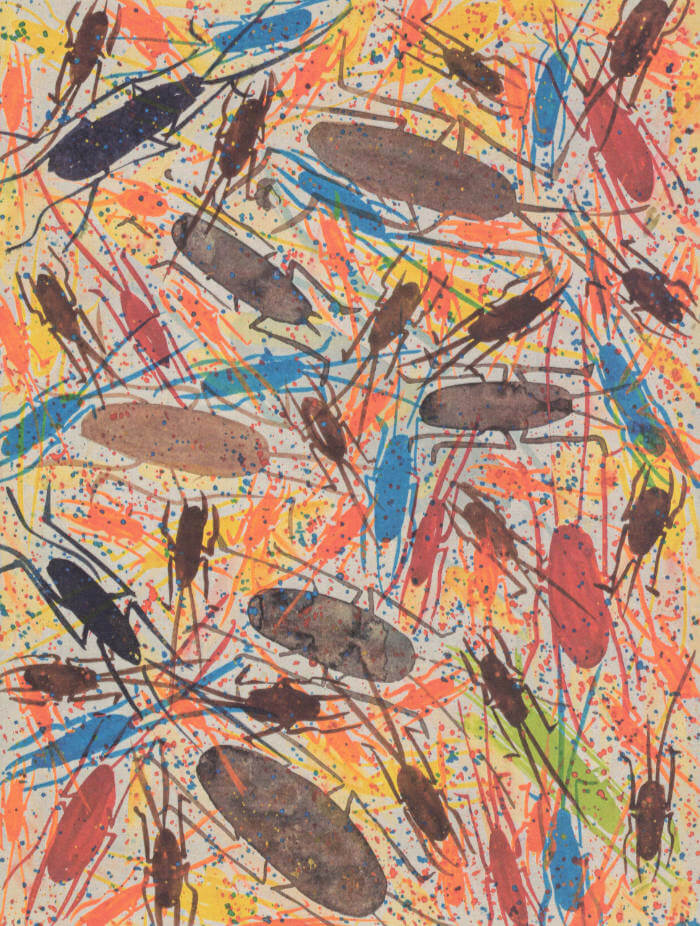
A Rare Gift of the Tropics
A series of viral drawings by Jorge Zontal, signed General Idea, printed in 5 color offset.
Living and working together as part of the late 1960s Toronto counterculture, AA Bronson, Felix Partz, and Jorge Zontal formalized their collaboration in 1969 as a single entity known as General Idea. From their earliest projects like staging of The 1970 Miss General Idea Pageant to their late activist initiatives around the AIDS crisis, General Idea explored multimedia, conceptual, and performance work as a tool for engaging with common culture and its repressions.
Less well-known are the group's drawings, the vast majority of which have never been seen. The drawings shown in A Rare Gift of the Tropics were all produced by Jorge Zontal, who made them as a habitual practice during the group's brainstorming meetings; however, given General Idea's mandate for co-authorship (and as demonstrated by the "GI" signature affixed by Zontal shortly before his death) as well as the circumstances under which they were executed, they are considered to be collaborative. The drawings assumed a greater regularity after 1985, the year the group left Toronto, which felt increasingly isolated from the global art world, for New York. As the 1980s wore on, their early joie de vivre was tempered by the pervasive presence of AIDS. In Bronson's words, it was a period "during which we had to face and somehow incorporate the illness and death of most of our friends, as well as Jorge and Felix themselves."
Although drawn by hand, the repetition of specific motifs follows a logic that is akin to General Idea's own penchant for mass reproduction and that echo the virality of their AIDS works. In their mutability and insistent flow, the drawings are a fascinating window into General Idea's distinct artistic vision and unique notions of authorship, exposing representation's inadequacy while acknowledging its urgency.

Fassbinder Thousands of Mirrors
A kaleidoscopic study of Rainer Werner Fassbinder.
Melodrama, biography, cold war thriller, drug memoir, essay in fragments, and mystery, Thousands of Mirrors is cult critic Ian Penman's long-awaited first full-length book: a kaleidoscopic study of Rainer Werner Fassbinder. Written over a short period "in the spirit" of RWF, who would often get films made in a matter of weeks or months, Thousands of Mirrors presents the filmmaker as Penman's equivalent of what Baudelaire was to Benjamin: an urban poet in the turbulent, seeds-sown, messy era just before everything changed. Beautifully written and extraordinarily compelling, echoing the fragmentary works of Roland Barthes and Emil Cioran, Eduardo Galeano and Alexander Kluge, this story has everything: sex, drugs, art, the city, cinema, and revolution.

Hit Parade of Tears: Stories
Izumi Suzuki had ideas about doing things differently, ideas that paid little attention to the laws of physics, or the laws of the land. In this new collection, her skewed imagination distorts and enhances some of the classic concepts of science fiction and fantasy.
A philandering husband receives a bestial punishment from a wife with her own secrets to keep; a music lover finds herself in a timeline both familiar and as wrong as can be; a misfit band of space pirates discover a mysterious baby among the stars; Emma, the Bovary-like character from one of Suzuki's stories in Terminal Boredom, lands herself in a bizarre romantic pickle.
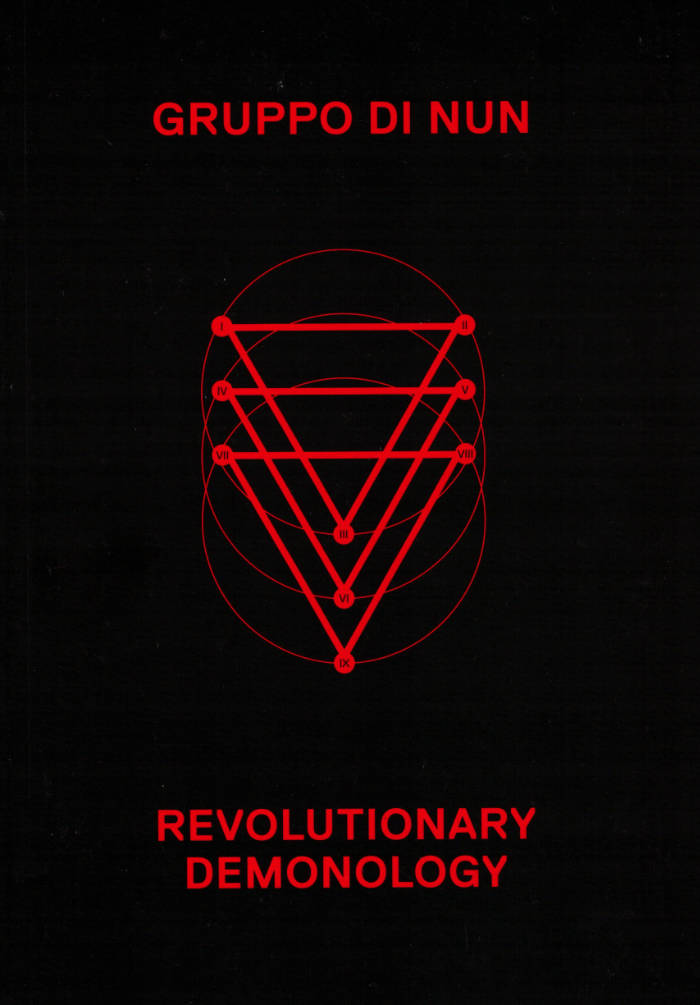
Revolutionary Demonology
An anthology of occult resistance: unpredictable and fascinating, at times hallucinatory, sullying politics, philosophy, cybertheory, religion, and music.
The End Times are here. The Digital Middle Ages approaches, the plague reaps its deadly harvest, climate apocalypse is around the corner, and fanaticism, fascism, and madness are rampant. The idea that we might gain the upper hand over the dark abyss into which the planet is tumbling is a form of magical thinking, laboring under the delusion that we can subdue eternity with relentless bloodlust, brutish exploitation, abuse of power, and violence. Revolutionary Demonology responds to this ritual of control, typical of what esoteric tradition calls the “Dogma of the Right Hand,” by reactivating the occult forces of a Left Hand Path that strives for the entropic disintegration of all creation, so as to make peace with the darkness and nourish the Great Beast that will finally break the seals of Cosmic Love.
Unpredictable and fascinating, genuinely bizarre, at times hallucinatory, sullying politics, philosophy, cybertheory, religion, and music alike with its fevered touch, this “anthology of occult resistance” collects together the communiqués of an arcane group who are already being hailed as the first morbid blossoming of “Italian Weird Theory”: a rogue contingent of theorists, witches, and sorcerers who heretically remix gothic accelerationism with satanic occultism and insurrectional necromancy.

Maa Ka Maaya Ka Ca A Yere Kono – 13th Edition of the Rencontres de Bamako - African Biennale of Photography
Bonaventure Soh Bejeng Ndikung
The catalogue of the 13th edition of the Rencontres de Bamako - African Biennale of Photography, focusing on multiplicity, difference, becoming, and heritage.
The dominant narrative in this "globalized world" is, incidentally, that of singularity—of universalism, of single identities, of singular cultures, of insular political systems. With this narrative, however, comes an illusory sense of stability and stasis; identities seem inalterable, cultures are immutable, political systems prove uneasy in the face of change. Thus, in sustaining this pervasive discourse, there has been a great loss of multiplicity, of fragmentation, of process and change, and not least of complex notions of humanity and equally complex narratives.
In decentering this year's biennale On Multiplicity, Difference, Becoming, and Heritage, General Director Cheick Diallo, Artistic Director Bonaventure Soh Bejeng Ndikung, and the curatorial team—Akinbode Akinbiyi (artist and independent curator), Meriem Berrada (Artistic Director, MACAAL, Marrakech), Tandazani Dhlakama (Assistant Curator, Zeitz MOCAA, Cape Town, South Africa), and Liz Ikiriko (artist and Assistant Curator, Art Gallery of York University, Toronto)—of the Bamako Encounters pay a powerful tribute to the spaces in between, to that which defies definition, to phases of transition, to being this and that or neither and both, to becoming, and to difference and divergence in all their shades. Accordingly, Amadou Hampâté Bâ's statement (Aspects de la civilisation africaine, Éditions Présence Africaine, 1972) presiding over the manifestation, Maa ka Maaya ka ca a yere kono,translates to, "the persons of the person are multiple in the person."
A key tool for negotiating the processual and shifting nature of multiplicity lies in storytelling. It is the central medium through which humanity points the lens on itself and launches an attempt at self-understanding and reflection, and the breadth of answers given throughout history testifies to the congenial nature of storytelling and multiplicity. Moreover, the stories we tell not only negotiate who we are but also expose underlying currents of who we will become in the future. This is the concern lying at the heart of the 13th edition of the Bamako Encounters—the stories we tell, the multiple facets of humanity we accommodate, notions of processuality, becoming in being, embracing identities that are layered, fragmented, and divergent, and the multifarious ways of being in the world, whether enacted or imagined. It should be emphasized that this does not apply only to questions of personal identity. On the contrary, it is a bold affirmation of transformation and transition, of becoming in an emphatic sense, and is thus equally significant for state politics. It also rings true for questions of heritage/patrimony. Embracing the kaleidoscopic legacy of our multiple heritages means to open them up and liberate the term "patrimony" from its etymological roots (the Latin patrimonium means "the heritage of the father"), imagining in its place an inclusive concept of matrimony.
Thus, in this 13th edition of the Bamako Encounters with the title Maa ka Maaya ka ca a yere kono, artists, curators, scholars, activists, and people of all walks of life are invited to reflect collectively on these multiplicities of being and differences, on expanding beyond the notion of a single being, and on embracing compound, layered and fragmented identities as much as layered, complex, non-linear understandings of space(s) and time(s).
Published following the 13th edition of the Rencontres de Bamako - African Biennale of Photography, in Bamako, Mali, in 2022.
With Saïd Afifi, Ixmucané Aguilar, Baff Akoto, Annie-Marie Akussah, Américo Hunguana, Daoud Aoulad-Syad, Leo Asemota, Myriam Omar Awadi, Salih Basheer, Shiraz Bayjoo, Amina Benbouchta, Hakim Benchekroun, Maria Magdalena Campos Pons, Rehema Chachage, Ulier Costa-Santos, Adama Delphine Fawundu, Fatoumata Diabaté, Aicha Diallo, Amsatou Diallo, Anna Binta Diallo, Mélissa Oummou Diallo, Nene Aïssatou Diallo, Binta Diaw, Adji Dieye, Imane Djamil, Sènami Donoumassou, Abdessamad El Montassir, Fairouz El Tom, Luvuyo Equiano Nyawose, Raisa Galofre, Raisa Galofre, Joy Gregory, Gherdai Hassell, Thembinkosi Hlatshwayo, Letitia Huckaby, Anique Jordan, Gladys Kalechini, Hamedine Kane, Atiyyah Khan, Gulshan Khan, Seif Kousmate, Mohammed Laouli, Maya Louhichi, Mallory Lowe Mpoka, Nourhan Maayouf, Marie-Claire Messouma Manlanbien, Botembe Moseka Maïté, Louisa Marajo, Clarita Maria, Billie McTernan, Mónica de Miranda, Arsène Mpiana Monkwe, Sethembile Msezane, Ebti Nabag, Elijah Ndoumbe, Lucia Nhamo, Samuel Nja Kwa, Nyancho NwaNri, Jo Ractcliffe, Adee Roberson, Fethi Sahraoui, Muhammad Salah, Neville Starling, Eve Tagny, René Tavares, Sackitey Tesa, Helena Uambembe, David Uzochukwu, Sofia Yala, Timothy Yanick Hunter.

Decolonizing Art Book Fairs – Pratiques de l'édition indépendante dans les Sud(s)
Parfait Tabapsi, Michalis Pichler and 3 more
A manifesto for the decolonization of art book fairs and publishing.
Can we decolonize art book fairs? Can we decentralize knowledge and deconstruct privilege in our contexts? Decolonizing Art Book Fairs aims to rethink through the existing and speculative frameworks of organizational practice in the art book fairs. This workbook attempts to introduce new narratives and help deconstruct the frontiers between north(s) and south(s), putting an emphasis on practitioners and initiatives from the African continent and diaspora. A workbook with (primarily newly commissioned) texts and interviews.
Contributions by Jean-Claude Awono, Yaiza Camps, Chayet Chiénin, Chimurenga, Renata Felinto, Wanjeri Gakuru, Moritz Grünke, Aryan Kaganof, Sharlene Khan, Grada Kilomba, Carla Lever, Fouad Asfour, Dzekashu MacViban, Gladys Mendía, James Murua, Tinashe Mushakavanhu, Simon Njami, Bonaventure Soh Bejeng Ndikung, Monica Nkodo, O Menelick 2Ato, Pascale Obolo, Michalis Pichler, Mario Pissarra, Sergio Raimundo, Djimeli Raoul, Flurina Rothenberger, Bienvenu Sene, Bisi Silva, Kwanele Sosibo, Parfait Tabapsi, Louise Umutoni, Zamân Books & Curating.

Art is Magic
First monograph in French: from Rod Stewart to the Industrial Revolution, Art is Magic collates all of acclaimed artist Jeremy Deller's cultural touchstones into one lovingly curated volume, balancing these artistic inspirations with examples of Deller's visionary work.
Published on the occasion of the exhibition Jeremy Deller: Art is Magic at Frac Bretagne, Musée des beaux-arts and La Criée art center, Rennes, in 2023.
Texts by Jeremy Deller; interview with Jeremy Deller by Daniel Scott, Alan Kane, Mary Beard, Jonny Banger, Cheerio. Translated from the English by Sandra von Lucius.

Spike #75 – Closed due to Colonialism, Elitism, and a Private Dinner – The Museum Issue
Spike #75 fêtes the museum in all its stuffy, messy, showy, old-timey glory, as a home-away-from-home, the address of solace and astonishment.
Featuring William Pope.L, Simon Wu, Louise Lawler, Ben Davis, Ann Demeester, Anthony Hudek, Meschac Gaba, Bernadette Van-Huy, Ghislaine Leung, Estelle Hoy, Tea Hacic-Vlahovic, and many more.
This issue is a guestbook to be leafed through at half-light, to be reminded among all the petitions to should of what the museum already is: a trove of our symbols and the histories they shift for; a stubborn beauty mark amid everything's turning smoother; an agora and a target and a legacy of timeless becoming. If it is a half-light of dawn, let it be a new chapter; and if dusk, then a eulogy of many voices.
Founded by the artist Rita Vitorelli in 2004, Spike (Spike Art Quarterly) is a quarterly magazine on contemporary art published in English which aims at sustaining a vigorous, independent, and meaningful art criticism. At the heart of each issue are feature essays by leading critics and curators on artists making work that plays a significant role in current debates. Situated between art theory and practice and ranging far beyond its editorial base in Vienna and Berlin, Spike is both rigorously academic and stylishly essayistic. Spike's renowned pool of contributing writers, artists, collectors and gallerists observe and reflect on contemporary art and analyse international developments in contemporary culture, offering its readers both intimacy and immediacy through an unusually open editorial approach that is not afraid of controversy and provocation.

Bosses
As an artist how can you get out of the hiding position? To make art is to understand how you are, notice your prejudices and assumptions about value and acknowledge your hand in an unequal world, to recognise how you institute yourself while letting go of the outcome of work.
Ghislaine Leung is a British conceptual artist. Her work uses score-based instructions to radically redistribute and constitute the terms of artistic production. For Leung, limitations, felt as personal, institutional, structural or systemic to the parameters of industry, are engaged in as means to institute differently. Born in Stockholm, Sweden to a father from Hong Kong and a mother from London, she was raised first in Reims, France and then in London, England. She received a BA Fine Art in Context at the University of the West of England in 2002 and a Masters in Aesthetics and Art Theory at the Centre for Research in Modern European Philosophy at Middlesex University in 2009. Between 2004 and 2014 she worked at Tate and LUX, London. Leung’s first book was Partners (Cell Project Space, 2018). She lives in London, UK.
978-1-9164250-0-2
21.6 x 13.9 cm
96 pp
Paperback
September 2023
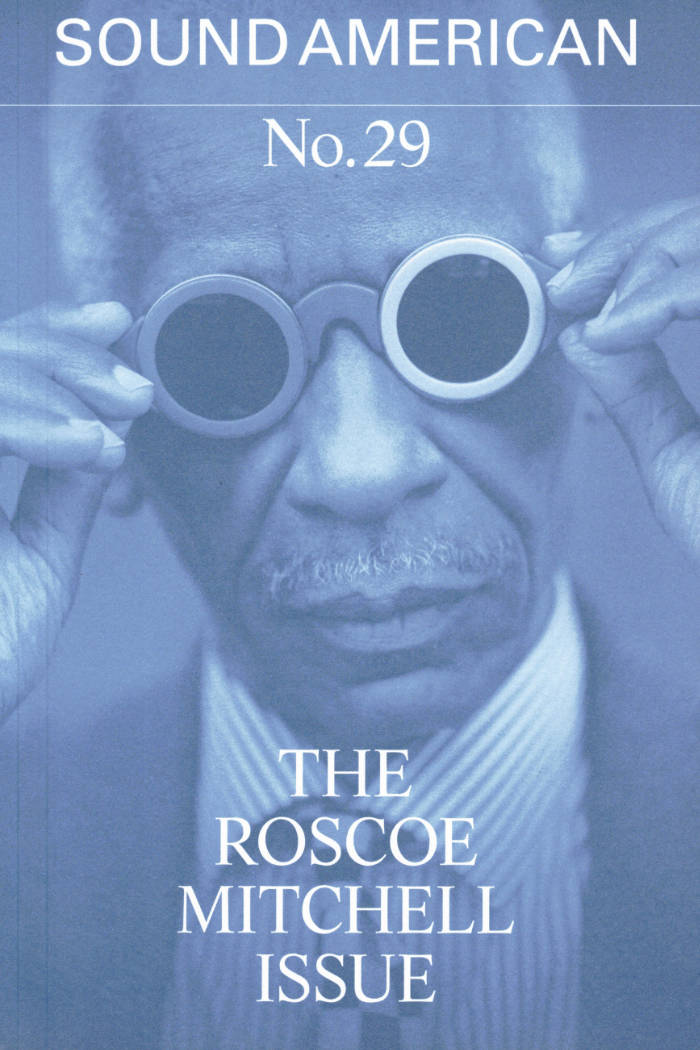
Sound American #29 – The Roscoe Mitchell Issue
Sound American #29 celebrates Art Ensemble of Chicago founder and American iconoclast, Roscoe Mitchell.
This special issue is an appreciation of Mitchell's career as an improvisor, instrumentalist, composer, painter, and educator as told by the musicians whom he has affected and through his own words. The issue starts with a rigorously researched and beautifully written overview of the saxophonist's career by Brooklyn-based saxophonist Sam Weinberg. As the reader continues, they will then find insights into Mitchell's work and working methods from a group of future iconoclasts, such as Tyshawn Sorey, Darius Jones, Ken Vandermark, James Fei.
Throughout the issue, composer and improvising harpist Zeena Parkins explores Mitchell's work as an educator through a series of interviews with former Mills College students, all of were collaborators in orchestrating and arranging Mitchell's recent works for large ensembles.

Archive Dora Diamant #08
A collection of photographs from the archives of the icon of underground and alternative Parisian nights Dora Diamant.
A self-taught photographer, Dora Diamant has left thousands of photos. The Dora Diamant Association, custodian of this archive, and Éditions L'Amazone have joined forces to bring them to life by devoting a series of publications to them. Each volume of the Dora Diamant Archive was created by a different person and is the result of a subjective selection and arrangement specific to its author.
Figurehead of the Parisian underground and queer nights, photographer, DJ, multimedia and polymorphic artist, Dora Diamant was the daughter of Pascal Doury.
Selected by Sivan Medioni.

Archive Dora Diamant #07
A collection of photographs from the archives of the icon of underground and alternative Parisian nights Dora Diamant.
A self-taught photographer, Dora Diamant has left thousands of photos. The Dora Diamant Association, custodian of this archive, and Éditions L'Amazone have joined forces to bring them to life by devoting a series of publications to them. Each volume of the Dora Diamant Archive was created by a different person and is the result of a subjective selection and arrangement specific to its author.
Figurehead of the Parisian underground and queer nights, photographer, DJ, multimedia and polymorphic artist, Dora Diamant was the daughter of Pascal Doury.
Selected by Yamil Farah and Mélanie Matranga.

Archive Dora Diamant #06
A collection of photographs from the archives of the icon of underground and alternative Parisian nights Dora Diamant.
A self-taught photographer, Dora Diamant has left thousands of photos. The Dora Diamant Association, custodian of this archive, and Éditions L'Amazone have joined forces to bring them to life by devoting a series of publications to them. Each volume of the Dora Diamant Archive was created by a different person and is the result of a subjective selection and arrangement specific to its author.
Figurehead of the Parisian underground and queer nights, photographer, DJ, multimedia and polymorphic artist, Dora Diamant was the daughter of Pascal Doury.
Selected by Leopold Duchemin.

Archive Dora Diamant #05
A collection of photographs from the archives of the icon of underground and alternative Parisian nights Dora Diamant.
A self-taught photographer, Dora Diamant has left thousands of photos. The Dora Diamant Association, custodian of this archive, and Éditions L'Amazone have joined forces to bring them to life by devoting a series of publications to them. Each volume of the Dora Diamant Archive was created by a different person and is the result of a subjective selection and arrangement specific to its author.
Figurehead of the Parisian underground and queer nights, photographer, DJ, multimedia and polymorphic artist, Dora Diamant was the daughter of Pascal Doury.
Selected by Clara Pacotte and Esmé Planchon.

Copiez ce livre – Un manuel sur le droit d'auteur et les communs culturels, par et pour les artistes
An artist's guide to copyright, written for makers.
Both practical and critical, this book will guide you through the concepts underlying copyright and how they apply in your practice.
How do you get copyright? For what work? And for how long? How does copyright move across mediums, and how can you go about integrating the work of others? Because they get copyright too!
Copy this Book will detail the concepts of authorship and original creation that underlie our legal system. This way, it will equip you with the conceptual keys to participate in the debate on intellectual property today.
Eric Schrijver is a Dutch interaction designer, artist and author, born in Amsterdam in 1984. He lives in Brussels, and works for the Belgian IT company ACSONE, designing and developing interfaces for clients in the public and private sector. Eric Schrijver directs a group blog called I like tight pants and mathematics, that aims to motivate designers and artists to get more involved in the world of computer programmers. From 2011 to 2017 he was a core member of the graphic design collective Open Source Publishing. Eric Schrijver has taught workshops at art schools around the world. He has been a teacher at the Masters Graphic Design at the École de Recherche Graphique (ERG), and as well as a faculty member at KABK (The Hague), where he taught coding and interaction design.

Pidginization as Curatorial Method – Messing with Languages and Praxes of Curating
Bonaventure Soh Bejeng Ndikung
In this compelling rethinking of curatorial practice, renowned museum director, curator, and writer Bonaventure Soh Bejeng Ndikung proposes that Pidgin languages and pidginization as a mode of being and doing offer a decolonialized reinvention of communicative practices—a space in which the boundaries between disciplines of knowledge collapse and sociopolitical, economic, ethical, and spiritual concepts and questions are renegotiated.
Written as a series of powerful anecdotes, the book grounds its provocative ideas in personal, cultural, and political histories of challenge and improvisation, and argues, as Ndikung writes, that "pidginized curating is a curating that combines works, ideas, practices, and languages in resistance to canonical conventions, cultural stasis, ossified practices, dead rhythms, and singular forms."
Bonaventure Soh Bejeng Ndikung (born 1977 in Yaoundé, Cameroon, lives and works in Berlin) is an independent art curator, art critic, author and biotechnologist. He is founder and artistic director of SAVVY Contemporary Berlin and editor-in-chief of SAVVY Journal for critical texts on contemporary African art. He was associate professor at Muthesius University Kiel, and is currently guest professor in curatorial studies at the Städelschule in Frankfurt. He was curator-at-large for documenta 14, and was a guest curator of the 2018 Dak'Art Biennale in Senegal. As part of the Miracle Workers Collective, he curated the Finnish Pavilion at the Venice Biennale in 2019.

Emil Lime
Emil Lime collects various materials that nurture and give shape to Esther Gatón’s artistic practice, including collages made with her phone pics, sketches, sporadic notes and drawings, together with the writing of authors that have been influential on the work: Fredy Massad, María Fernanda Ampuero, Darya Diamond and Cory John.

The Long Form
The Long Form is the story of two people composing a day together. It is a day of movements and improvisations, common and uncommon rhythms, stopping and starting again. As the morning progresses, a book – The History of Tom Jones by Henry Fielding – gets delivered, and the scope of the day widens further. Matters of care-work share ground with matters of friendship, housing, translation, aesthetics and creativity. Small incidents of the day revive some of the oldest preoccupations of the novel: the force of social circumstance, the power of names, the meaning of duration and the work of love. With lightness and precision, Kate Briggs renews Henry Fielding’s proposition for what a novel can be, combining fiction and essay to write an extraordinary domestic novel of far-reaching ideas.
Kate Briggs grew up in Somerset, UK, and lives and works in Rotterdam, NL, where she founded and co-runs the writing and publishing project ‘Short Pieces That Move’. She is the translator of two volumes of Roland Barthes’s lecture and seminar notes at the Collège de France: The Preparation of the Novel and How to Live Together, both published by Columbia University Press. The Long Form follows This Little Art, a narrative essay on the practice of translation. In 2021, Kate Briggs was awarded a Windham-Campbell Prize.
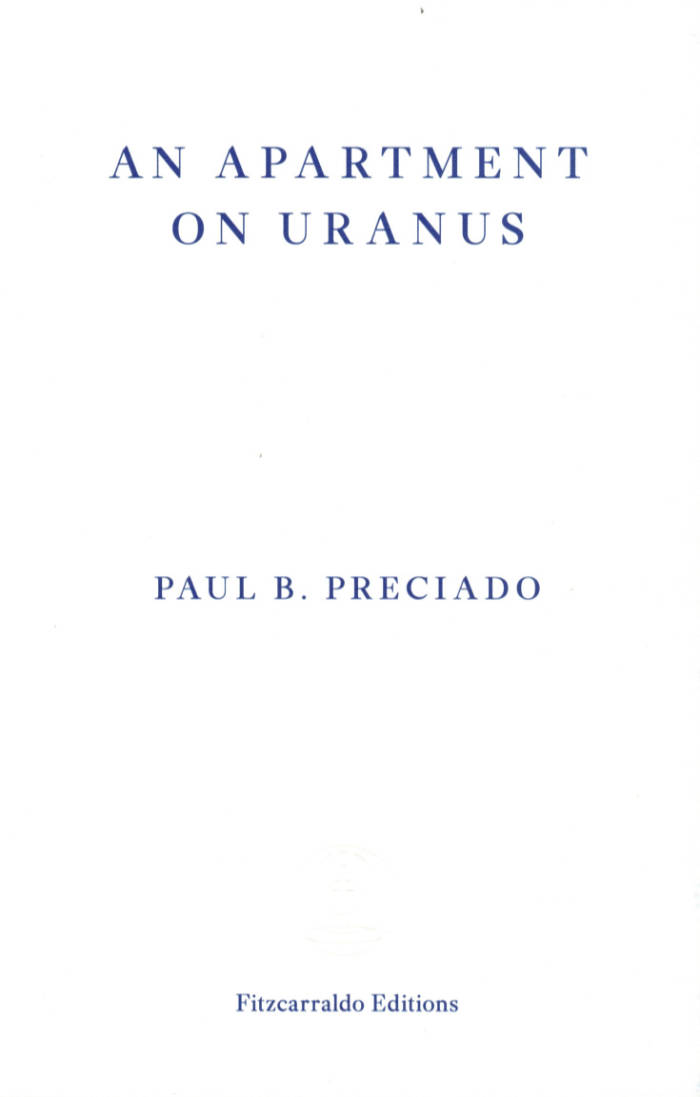
An Apartment on Uranus (Uk edition)
Uranus is the coldest planet in the solar system, a frozen giant named after a Greek deity. It is also the inspiration for Uranism, a concept coined by the writer Karl Heinrich Ulrichs in 1864 to define the ‘third sex’ and the rights of those who ‘love differently’. Following in Ulrichs’s footsteps, Paul B. Preciado dreams of an apartment on Uranus where he can live, free of the modern power taxonomies of race, gender, class or disability.
In this bold and transgressive book, Preciado recounts his transformation from Beatriz into Paul B., and examines other processes of political, cultural and sexual transition, reflecting on socio-political issues including the rise of neo-fascism in Europe, the criminalization of migrants, the harassment of trans children, the technological appropriation of the uterus, and the role artists and museums might play in the writing of a new social contract. A stepchild of Michel Foucault and Judith Butler, Preciado argues, with courage and conviction, for a planetary revolution of all living beings against the norm.

King Kong Theory (Uk edition)
Powerful, provocative and personal, King Kong Theory is a candid account of how the author of Baise-moi came to be Virginie Despentes. Drawing from personal experience, Despentes shatters received ideas about rape and prostitution, and explodes common attitudes towards sex and gender. King Kong Theory is a manifesto for a new punk feminism, reissued here in a brilliant new translation by Frank Wynne.
‘I write from the realms of the ugly, for the ugly, the frigid, the unfucked and the unfuckables, all those excluded from the great meat market of female flesh, and for all those guys who don’t want to be protectors, for those who would like to be but don’t know how, for those who are not ambitious, competitive, or well-endowed. Because this ideal of the seductive white woman constantly being waved under our noses – well, I’m pretty sure it doesn’t exist.’
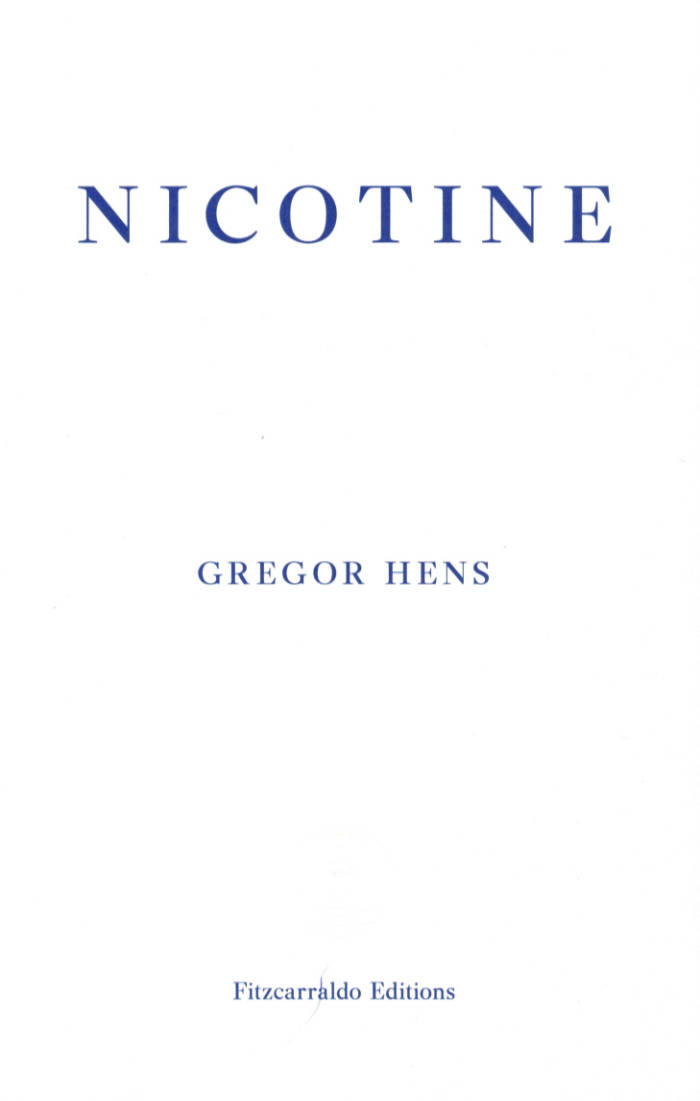
Nicotine
The translation of this work was supported by a grant from the Goethe-Institut which is funded by the German Ministry of Foreign Affairs
Written with the passion of an obsessive, Nicotine addresses a life of addiction, from the epiphany of the first drag to the perennial last last cigarette. Reflecting on his experiences as a smoker from a young age, Gregor Hens investigates the irreversible effects of nicotine on thought and patterns of behaviours. He extends the conversation with other smokers to meditations on Mark Twain and Italo Svevo, the nature of habit, the validity of hypnosis, and the most insignificant city in the United States, where he lived for far too long. With comic insight and meticulous precision, Hens deconstructs every facet of the dependency and offers a brilliant disquisition on the psychopathology of addiction.
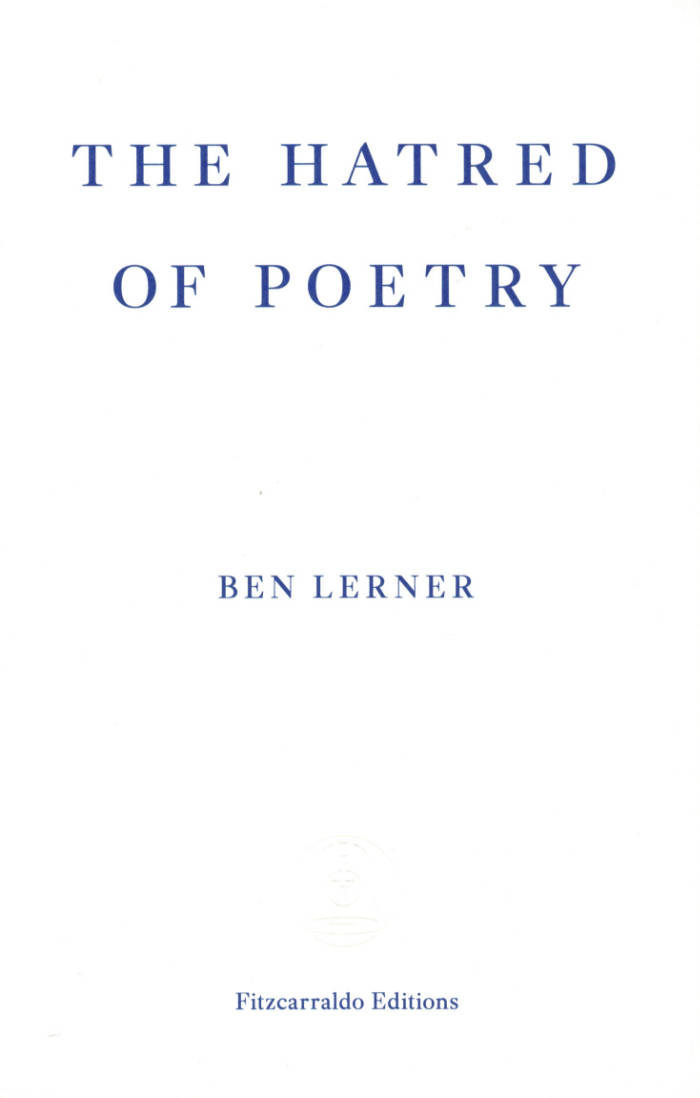
The Hatred Of Poetry
No art has been denounced as often as poetry. It’s even bemoaned by poets: ‘I, too, dislike it,’ wrote Marianne Moore. ‘Many more people agree they hate poetry,’ Ben Lerner writes, ‘than can agree what poetry is. I, too, dislike it and have largely organized my life around it and do not experience that as a contradiction because poetry and the hatred of poetry are inextricable in ways it is my purpose to explore.’
In this inventive and lucid essay, Lerner takes the hatred of poetry as the starting point of his defence of the art. He examines poetry's greatest haters (beginning with Plato’s famous claim that an ideal city had no place for poets, who would only corrupt and mislead the young) and both its greatest and worst practitioners, providing inspired close readings of Keats, Dickinson, McGonagall, Whitman, and others. Throughout, he attempts to explain the noble failure at the heart of every truly great and truly horrible poem: the impulse to launch the experience of an individual into a timeless communal existence. In The Hatred of Poetry, Lerner has crafted an entertaining, personal, and entirely original examination of a vocation no less essential for being impossible.

The Films of Laura Mulvey and Peter Wollen
This collection of Laura Mulvey and Peter Wollen's film scripts vividly evokes the close connection between their influential work as theorists and their work as filmmakers. It includes scripts for all six of Mulvey and Wollen's collaborative films, Wollen's solo feature film, Friendship's Death (1987), and Mulvey's later collaborations.
Each text is followed by a new essay by a leading writer, offering a critical interpretation of the corresponding film. The collection also includes Wollen's short story Friendship's Death (1976), the outlines for two unrealised Mulvey and Wollen collaborations, and a selection of scanned working documents. The scripts and essays collected in this volume trace the historical significance of a complex cinematic project that brought feminist, semiotic and psychoanalytic concerns together with formal devices and strategies.
The book includes original contributions from Nora M. Alter, Kodwo Eshun, Nicolas Helm-Grovas, Esther Leslie, Laura Mulvey, Volker Pantenburg, Griselda Pollock, B. Ruby Rich and Sukhdev Sandhu.

IN THE BAG
Published as a precursor to BFTK#6, ‘In the Bag’ by Paul Buck is a pamphlet / essay / missive about rarities, the out of print, one-offs and those ‘oddities, oddments and ornaments’ that collectors and magpies seek, hoard and lose. Printed and numbered in an edition of 150, each copy comes with a violet insert featuring a photograph of a Gladstone bag by Valentine Day.